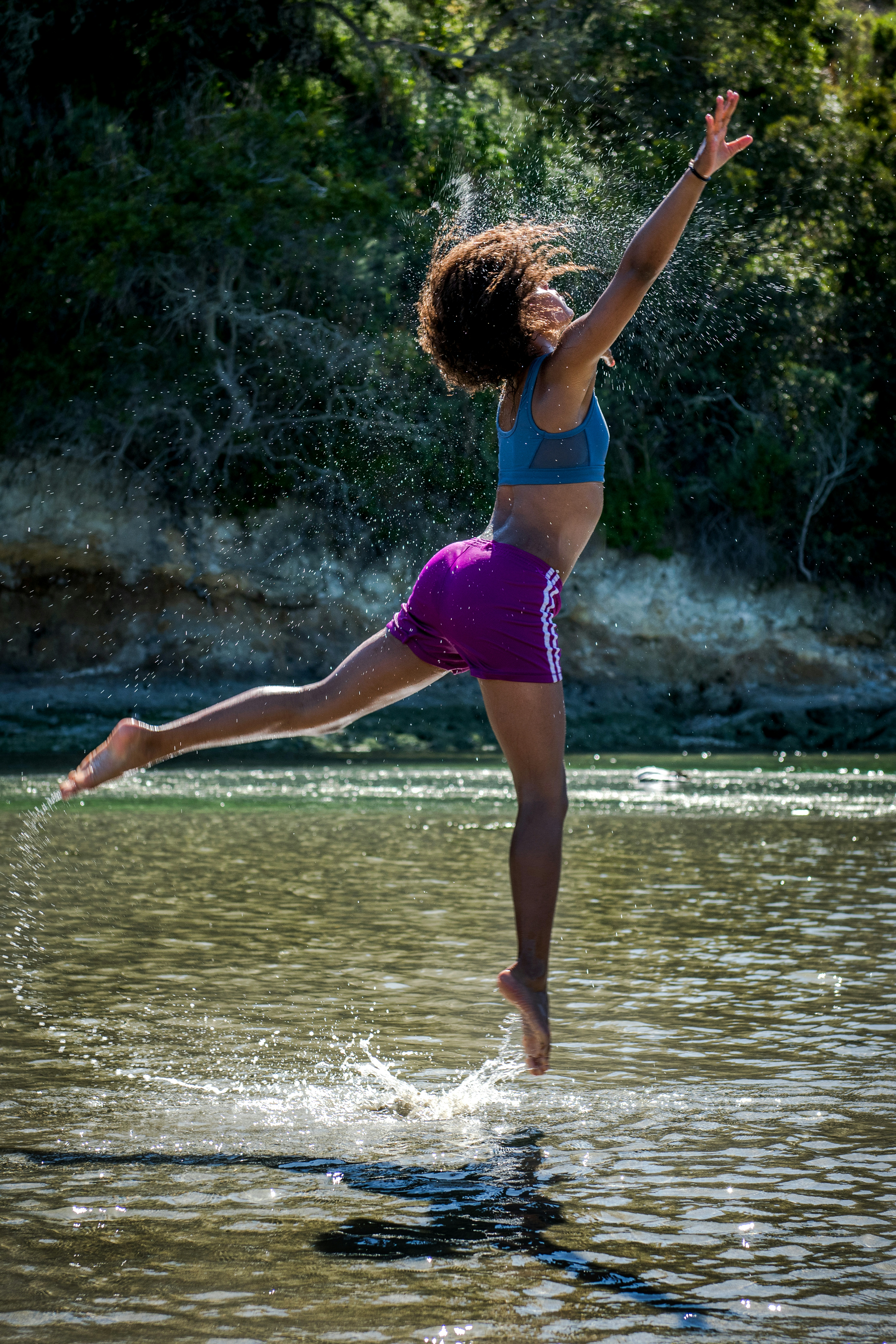Elevating Your Game with Mindfulness Techniques in Sports Training
In the high-stakes world of sports, where every millisecond can make the difference between victory and defeat, athletes are constantly searching for an edge. Training regimens are more rigorous than ever, with countless hours spent in the gym, on the field, or in the pool. But what if the key to unlocking your potential isn’t just physical strength or endurance, but rather something as simple yet profound as mindfulness? It’s a concept often associated with meditation and relaxation, yet its application in sports training is anything but simple.
The Mind-Body Connection
First, let’s ponder this: when was the last time you truly listened to your body? I mean really listened? In the hustle of daily training, many athletes push through fatigue, ignore pain, or let their minds drift to distractions. This is where mindfulness swoops in like a superhero—ready to save the day. Mindfulness is fundamentally about being fully present in the moment, aware of your thoughts, feelings, and physical sensations without judgment. It’s the art of tuning in, rather than tuning out.
Research shows that mindfulness can lead to improved performance, reduced anxiety, and enhanced focus. Studies suggest that athletes who practice mindfulness techniques often experience heightened awareness of their bodies and emotions, allowing them to respond more effectively to both challenges and opportunities in their sport. For instance, a basketball player might find that by being more present during a game, they make more accurate shots and better decisions on the court. It’s as if they’ve taken off a pair of foggy glasses, revealing a sharper view of the game.
Real-World Applications of Mindfulness
Let’s take a look at how some elite athletes are incorporating mindfulness into their training. Consider the case of tennis champion Novak Djokovic. He’s not just known for his powerful backhand; he’s also a vocal advocate for mindfulness and meditation. Djokovic attributes much of his success to the mental clarity he gains through these practices. In interviews, he often emphasizes the importance of being centered and focused, especially during high-pressure matches. It struck me that this mental fortitude is what separates the good from the great.
Another example is the world of professional golf. Many golfers, including the likes of Phil Mickelson, have turned to mindfulness to help them cope with the pressures of the game. Golf is a sport that demands immense concentration, and the ability to stay calm amidst the chaos can make all the difference. Mickelson has been known to practice visualization techniques, imagining his perfect swing before he even steps up to the tee. This mental rehearsal is a form of mindfulness that allows him to connect with his body and the environment, ultimately elevating his performance.
Mindfulness Techniques for Athletes
Now that we’ve established the importance of mindfulness, let’s dig into some practical techniques that any athlete—whether a weekend warrior or a professional—can incorporate into their training routine. These techniques can help enhance focus, reduce stress, and improve overall performance.
1. Breath Awareness
One of the simplest yet most effective mindfulness techniques is breath awareness. It’s as easy as it sounds: taking a moment to focus on your breath can ground you in the present. Here’s how you can do it:
- Find a quiet space where you can sit or stand comfortably.
- Close your eyes and take a deep breath in through your nose, allowing your lungs to fill completely.
- Exhale slowly through your mouth, feeling the tension release from your body.
- Repeat this process for a few minutes, paying attention to the sensation of your breath entering and leaving your body.
Incorporating breath awareness into your pre-training routine can help calm your mind and sharpen your focus.
2. Body Scan Meditation
Another powerful technique is the body scan meditation. This involves mentally scanning your body from head to toe, noticing any areas of tension or discomfort. It’s a great way to develop body awareness, which is crucial in sports. Here’s a simple guide:
- Lie down or sit in a comfortable position.
- Close your eyes and take a few deep breaths.
- Begin at the top of your head and slowly move your attention down your body.
- Notice any sensations, aches, or areas of tightness without judgment—just observe.
- Continue down to your toes, taking your time with each part of your body.
The body scan not only fosters relaxation but also allows you to identify and address physical issues before they become major problems.
3. Visualization Techniques
Visualization is another effective mindfulness strategy. Top athletes often use visualization to prepare for competitions. It’s about creating a mental image of success. To practice visualization:
- Find a quiet space and close your eyes.
- Imagine yourself performing at your best—whether it’s scoring a goal, hitting a home run, or running a marathon.
- Try to incorporate as much detail as possible: the sounds, the sights, the emotions.
- Feel the exhilaration of success as you visualize the experience.
This technique can boost your confidence and help you mentally prepare for the challenges ahead.
Mindfulness in Team Sports
While individual athletes can greatly benefit from mindfulness, team sports offer unique opportunities for collective mindfulness practices. Imagine a soccer team huddled together before a match, engaging in a quick mindfulness session. It’s a way to unify their focus and set a shared intention for the game. Some teams have started incorporating mindfulness training into their practice schedules, recognizing that a cohesive team mindset can lead to better communication and performance on the field.
Moreover, mindfulness can enhance team dynamics. When athletes practice being present and aware of their teammates’ thoughts and emotions, it fosters empathy and understanding. Players are less likely to react defensively and more likely to support each other. I recall a story about a basketball team that adopted mindfulness practices; they went from being a collection of talented individuals to a well-oiled machine, largely due to their improved communication and emotional awareness.
Creating a Mindfulness Culture
For coaches and team leaders, it’s essential to create a culture that values mindfulness. This can be achieved through regular mindfulness sessions, incorporating relaxation techniques into warm-ups, or simply encouraging athletes to take a few moments of silence before intense practices or games. The key is consistency—making mindfulness a part of the training routine, rather than a one-off activity.
One memorable example comes from the famed Seattle Seahawks, who have integrated mindfulness into their training. Coach Pete Carroll emphasizes the importance of mental well-being, and the team has seen remarkable cohesion and performance as a result. It’s a testament to how fostering a mindful environment can lead to extraordinary outcomes.
Challenges and Misconceptions
Of course, as with any practice, there are challenges and misconceptions surrounding mindfulness in sports training. One common myth is that mindfulness is synonymous with relaxation. While it can certainly promote relaxation, it’s also about awareness and focus, which are crucial during high-pressure situations.
Another misconception is that mindfulness requires a significant time commitment. In reality, even a few minutes a day can yield benefits. Athletes often think they’re too busy to incorporate mindfulness, but the irony is that taking time to practice mindfulness can actually enhance their efficiency and performance.
Overcoming Resistance
Resistance to mindfulness practices can also stem from skepticism. Some athletes may view it as “fluffy” or irrelevant to their sport. To tackle this, sharing scientific research and real-life success stories can help illustrate the tangible benefits. Engaging athletes in discussions about their thoughts and feelings can also open the door to understanding the value of mindfulness.
For example, a coach might share how a mindfulness practice helped them overcome a particularly stressful match or competition. These personal anecdotes can resonate with athletes and help them see mindfulness as a practical tool rather than a theoretical concept.
The Science Behind Mindfulness
Speaking of research, let’s delve into the scientific backing for mindfulness in sports training. Numerous studies have shown that mindfulness practices can lead to enhanced cognitive function, improved emotional regulation, and even physical performance. For instance, a study published in the journal “Psychology of Sport and Exercise” found that athletes who engaged in mindfulness training reported decreased anxiety and improved focus during competitions.
Moreover, neuroimaging studies have revealed that mindfulness practices can lead to structural changes in the brain, particularly in areas related to attention, emotion regulation, and cognitive flexibility. This means that not only are athletes feeling better mentally, but their brains are literally adapting to support their performance.
Incorporating Mindfulness into Training Regimens
So, how can coaches and athletes effectively weave mindfulness into their training regimens? It starts with setting aside specific times for mindfulness activities. This could be during warm-ups, cooldowns, or even team meetings. The idea is to create a routine that normalizes mindfulness practices within the training environment.
Additionally, integrating mindfulness into existing training activities can make the process feel more organic. For example, during a run, athletes can practice mindful breathing, paying attention to their breath and the rhythm of their footsteps. As they become more attuned to their bodies, they may find they can push themselves further while maintaining a sense of calm.
Personal Reflections on Mindfulness in Sports
Reflecting on my journey as a sports journalist, I’ve seen firsthand the transformative power of mindfulness. I remember covering a local marathon where I spoke with a runner who had recently adopted mindfulness practices. She shared how, before she started focusing on her breath and being present, she would often feel overwhelmed during races. Now, she said, “It’s like I’m dancing with the rhythm of my feet and the energy of the crowd.” Her enthusiasm was infectious, and it struck me how mindfulness had changed her experience of running from a frantic race against the clock to a joyful expression of movement.
Mindfulness isn’t just about performance; it’s about the love of the game and the joy found in participating. Whether it’s the thrill of a last-minute goal or the satisfaction of completing a personal best, mindfulness can deepen the connection athletes have with their sport.
Looking Ahead: The Future of Mindfulness in Sports
As mindfulness continues to gain traction in the world of sports, it’s clear that its potential is vast. More teams and organizations are recognizing the importance of mental health and well-being, leading to the integration of mindfulness practices in training programs at all levels. The future could see mindfulness becoming a standard component of athletic training, much like strength and conditioning.
In conclusion, elevating your game with mindfulness techniques is about more than just enhancing performance; it’s about enriching the experience of being an athlete. It’s about learning to embrace the present moment, to savor the journey, and to cultivate a deeper connection with oneself and others in the sporting community. So, whether you’re a coach, an athlete, or a passionate fan, consider taking a moment to breathe, to be present, and to enjoy the beautiful game—whatever that game may be.
And who knows? That moment of mindfulness might just be the secret sauce that elevates your game to new heights.




